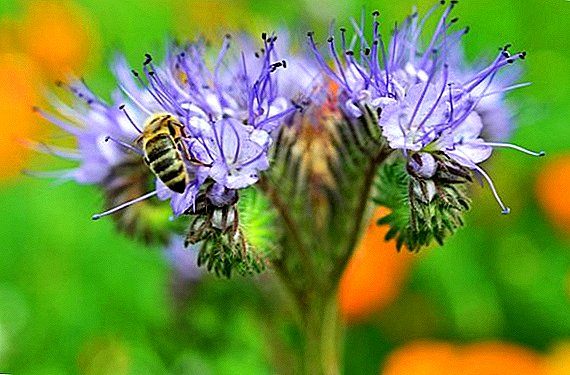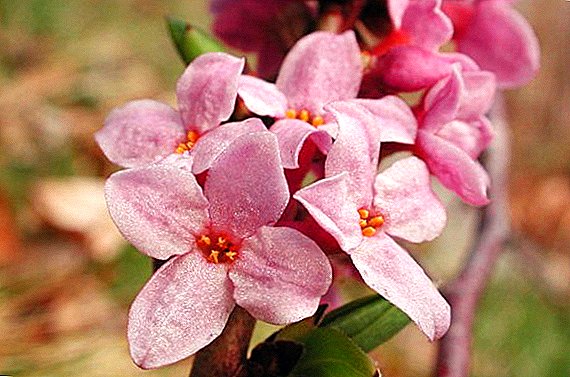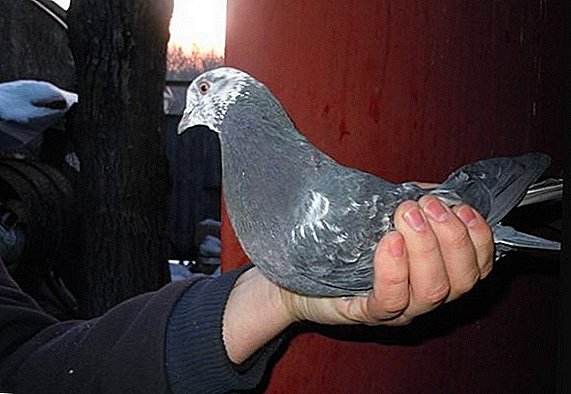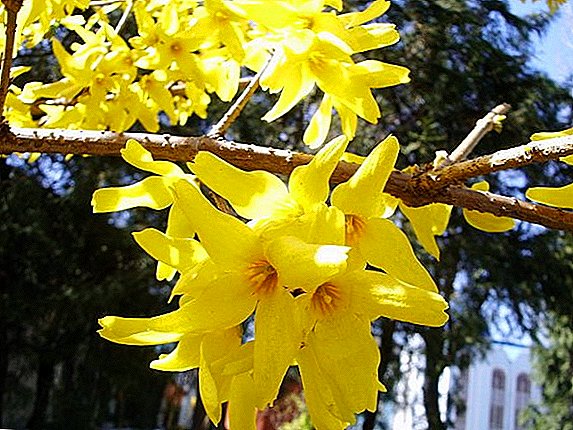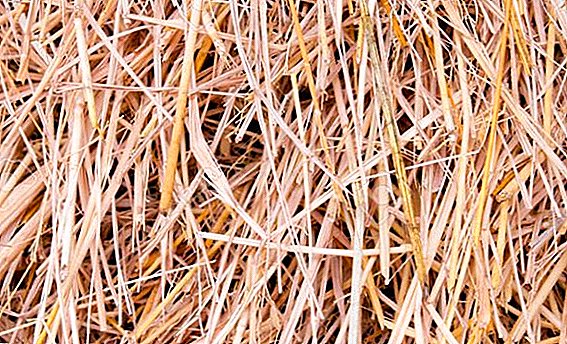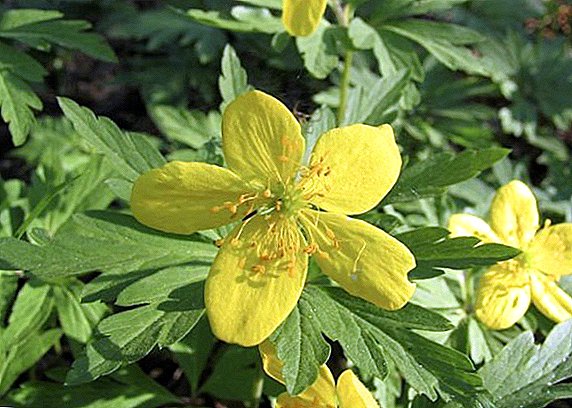 Imagine, even poisonous plants can be useful, for example, used in folk and traditional medicine, as well as for decorative purposes. Today we will talk about the buttercup anemone, or buttercup anemone, which combines both healing properties and beauty. We will get acquainted with the description of this plant, we will understand how to plant and grow it in our area, as well as how to prepare and why use this flower.
Imagine, even poisonous plants can be useful, for example, used in folk and traditional medicine, as well as for decorative purposes. Today we will talk about the buttercup anemone, or buttercup anemone, which combines both healing properties and beauty. We will get acquainted with the description of this plant, we will understand how to plant and grow it in our area, as well as how to prepare and why use this flower.
Botanical description
Buttercup anemone, it is Buttercup anemone, belongs to perennial herbaceous plants and belongs to the Buttercup family. It has a developed root system, the root is long and creeping, dark brown in color. The stem is solitary, upright, may be bare or rarely haired, its height varies from 10 to 30 cm. Foliage is dissected, three-lobed, semi-pubescent.
Anemone buttercup blooms in April - May, this period lasts 20 days. The flowers consist of 5 petals, with a lot of pistils and stamens, colored bright yellow. Anemone bloom ends when foliage appears on the trees and the amount of light is significantly reduced. In place of the buds appear buds - the fruits of the plant. The leaves and stem turn yellow, dry out and die off, and the rhizome continues to develop and prepare for the next spring.
Important! Breezy buttercup is often confused with a buttercup. The main distinctive feature of the first is the simple perianth and the absence of the sepals.
 Buttercup Anemone - poisonous plant, in its green part contains narcotic and toxic substances, therefore, it is necessary to handle the plant very carefully in order to avoid contact of the juice with the skin and mucous membranes. Otherwise, allergic reactions and severe burns may occur.
Buttercup Anemone - poisonous plant, in its green part contains narcotic and toxic substances, therefore, it is necessary to handle the plant very carefully in order to avoid contact of the juice with the skin and mucous membranes. Otherwise, allergic reactions and severe burns may occur.
Belladonna, black eye, marsh wild rosemary, cowberry, ivy, berry yew, field larks, red elderberry, autumn crocus are also poisonous plants, but they have healing properties and are even used in traditional medicine to treat many diseases.
Distribution and habitat
In the wild, anemone buttercup is found in Central Europe, the Mediterranean, Asia Minor, in the European part of Russia, Ciscaucasia, and in southern Siberia. The plant can be found in deciduous and slightly less often in spruce-deciduous forests.
Types of anemone lutikna
There are more than 150 varieties of anemones that have external differences, as well as different growing season. Let's look at the most common types and their features:
- "Forest" - found on dry hills, meadows, meadow steppes and in light coniferous forests. It reaches a height of 5-15 cm, and the diameter of the buds is 3-7 cm, they are painted in snow-white color. The flowering period of the forest anemone falls on April - May.
- "Japanese Terry" - reaches a height of 60-70 cm, leaves pinnatisect, saturated green. Blooms in mid-summer and pleases with its pink or white buds until autumn. This species can be grown indoors.
- "Dubravnaya" - grows in deciduous and mixed forests, refers to spring anemone, the flowering period begins in mid-April and lasts 20 days. The flowers are painted white with a violet shade.
- "Fork" - grows mainly in wet soils, hummocky meadows and among shrubs. It blooms in early June and pleases with its buds until July. The petals of the flowers are white, their lower parts may have a reddish tint.
- "Felt" - can reach a height of 100-120 cm. Refers to resistant and cold-resistant species. Felt anemone produces buds in the middle - end of August, the flowering period lasts until the end of September - beginning of October.





Check out other common types of anemones.
Medical applications
Folk healers very often resort to the help of an anemone buttercup in the treatment of various diseases, despite the fact that the plant is poisonous. In fresh leaves, anemones contain such a toxic substance as anemone, which, after drying the leaves, turns into a no less dangerous anemonin. In small doses, these substances do not carry a mortal danger, but if you overdo it with the dosage, you can face serious problems.
Important! Buttercup anemones, like many other species of this plant, are excellent honey plants. This is due to the bright colors and attractive aroma of some of them.
The benefits of anemone, which includes, among others, glycosides and camphor, are as follows:
- relieves headache and toothache;
- helps to stop bleeding;
- effective in treating warts and abscesses;
- used to treat pertussis, rickets and asthma;
- normalizes the kidneys and bladder;
- helps to establish the menstrual cycle in women;
- a positive effect on the liver, gallbladder and spleen;
- effective for rheumatism, radiculitis, edema and gout.
Find out for the treatment of which diseases anemone is used in traditional medicine.
 From the leaves of the plant they prepare decoctions, tinctures and infusions, and then, depending on the nature of the disease, are taken orally or used externally in the form of compresses and lotions.
From the leaves of the plant they prepare decoctions, tinctures and infusions, and then, depending on the nature of the disease, are taken orally or used externally in the form of compresses and lotions.
Important! It is worth emphasizing once again that anemone refers to poisonous plants, therefore improper use of preparations based on it can lead to disastrous consequences. Before starting treatment, it is necessary to consult with a specialist and correctly calculate the dosage of such medicines.
Growing and caring for plants
One of the main advantages of anemone - is an incredibly attractive appearance. Even if you consider it risky to use this plant for treating diseases, you can simply plant anemones in your area and enjoy their beauty in early spring. Consider the basic rules for planting and caring for this herb.
Conditions of detention
The plant is successfully grown in the open field, it will become a worthy decoration of the dacha plot or any flower bed. Especially since the flowering of anemone begins very early, when many other plants have not yet had time to wake up after winter.  The buttercup anemone prefers light partial shade, so it is best to plant it between trees and shrubs. When choosing a landing site, it is worth considering that the anemone grows very quickly.
The buttercup anemone prefers light partial shade, so it is best to plant it between trees and shrubs. When choosing a landing site, it is worth considering that the anemone grows very quickly.
Did you know? In order to relieve stress from the eyes, just look at the flowers of white species of anemone for a few minutes.
Soil and fertilizer
The soil for planting should certainly be light and well drained, and also contain a large amount of humus. In order for the soil to meet these criteria, it is necessary to add a bit of river sand and small stones to the ground. Anemone does not like the soil with high acidity, the optimal level for it is 7-8 pH. Lime is used to reduce the acidity of the soil.  As a feed you can use mineral complex fertilizers. Make them should be in the flowering period.
As a feed you can use mineral complex fertilizers. Make them should be in the flowering period.
Watering and moisture
To watering should be treated with caution, anemone does not tolerate waterlogging, as, in fact, the drying of the soil. Therefore, water procedures should be kept under control and carried out as the top layer of soil dries.
Relation to temperature
In temperate climates, the plant winters well in the ground. In late autumn, you need to mulch the soil around the plant with foliage, peat or humus by 2-3 cm and cover the planting with spruce leaves. But in the northern corners, where winters are very harsh, it is better not to leave the anemone buttercup winter in the garden. It is recommended to dig up the rhizome and place in a dark cool place until the temperature normalizes. In early spring, the plant can be returned to its original place.
Did you know? The most poisonous plant in the world is the Mancinella tree, which grows in the Bahamas and Caribbean islands. Absolutely all its parts are toxic. - bark, foliage, fruit. It is very difficult to destroy such trees, because, for example, when burning, they release toxins that can lead to blindness.

Breeding
It is possible to multiply a butterfoot anemone in several ways:
- Tubers - The plant has a strong and developed rhizome, which grows very quickly. In the spring you can see young bushes with buds that are easy to replant. This method is the most successful.
- Root division - In early spring, you can dig up the tubers of the plant and divide them into parts so that each delenki has a bud. Then delenki planted in the ground to a depth of 5 cm, horizontally placing the rhizome.
- Seeds - This method is considered very troublesome and is very rarely used by gardeners. Seeds of anemone are sown before winter, but immediately it is worth noting that they do not have a high germination rate.

Harvesting and storage of raw materials
For the preparation of various drugs using both dried and fresh leaves of the plant. Cut the anemone is necessary only in gloves and avoid contact with its juice on the skin. Then the leaves are either immediately crushed in a meat grinder and poured with alcohol, or dried in the open air or dried and packed in bags made of natural fabric.
Important! If you chop the leaves of an anemone of buttercup, then in addition to gloves it is necessary to protect the mucous membranes with a cotton-gauze bandage and glasses.
As alcohol tinctures from fresh leaves of anemones, and dried raw materials should be stored in a dark, cool, well-ventilated area. The shelf life of this raw material is 24 months from the date of procurement. 
Possible difficulties in growing
When complying with the rules of agrotechnics, problems with growing plants are extremely rare. The main thing is not to allow overmoistening and drying of the rhizome, as well as to make mineral fertilizers in a timely and metered manner. In cold regions, it is necessary to dig up the tubers for the winter, otherwise flowering will occur much later.
Pests, diseases and prevention
Anemone does not belong to the painful representatives of the flora, but even with the high resistance to diseases, some problems can still arise. It happens that a herbaceous plant infects slugs. To combat them, it is enough to install water containers with high chlorine content.  A plant affected by nematodes. Sometimes nematodes attack an anemone of buttercups, their harmful effects are directed to the rhizome, which is covered with spots, it hurts and dies. If such a problem is diagnosed, the plants destroy and disinfect the soil.
A plant affected by nematodes. Sometimes nematodes attack an anemone of buttercups, their harmful effects are directed to the rhizome, which is covered with spots, it hurts and dies. If such a problem is diagnosed, the plants destroy and disinfect the soil.
Did you know? Lilies of the valley, buttercups, belladonna and dope are also poisonous plants, but they are widely used in pharmaceuticals and traditional medicine.
Now you know that a herbaceous plant called an Anemone anemone can easily be grown in its summer cottage. Her bright yellow flowers will be among the first to announce the arrival of spring and delight with its beauty. And if necessary, you can dry its foliage and use it as a medicine for various diseases.


